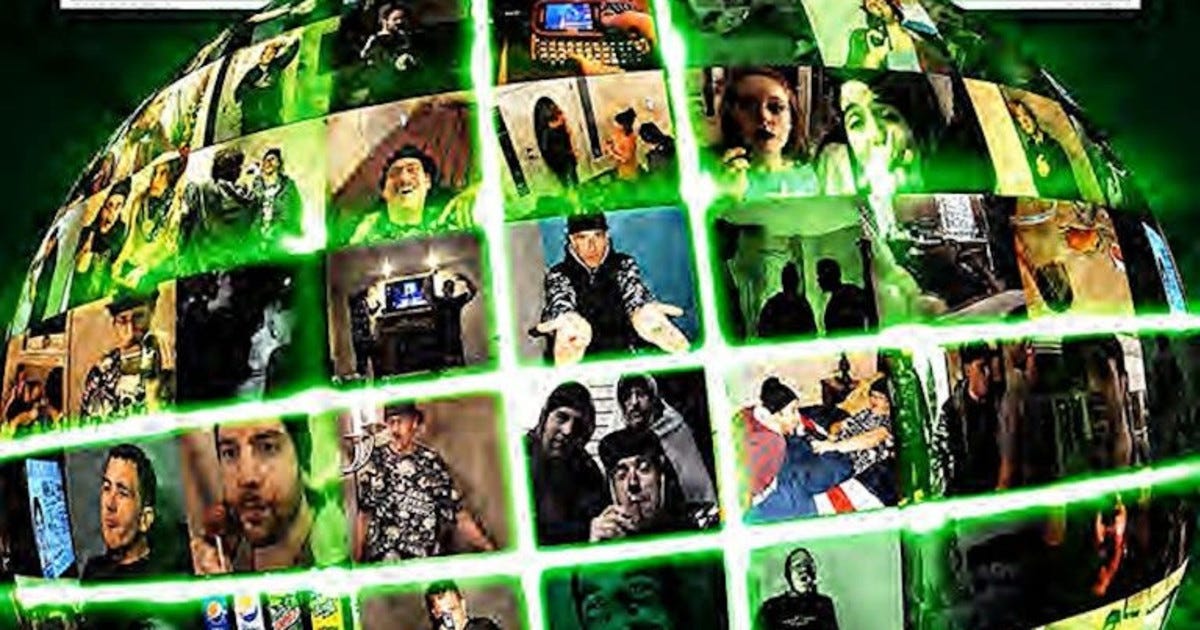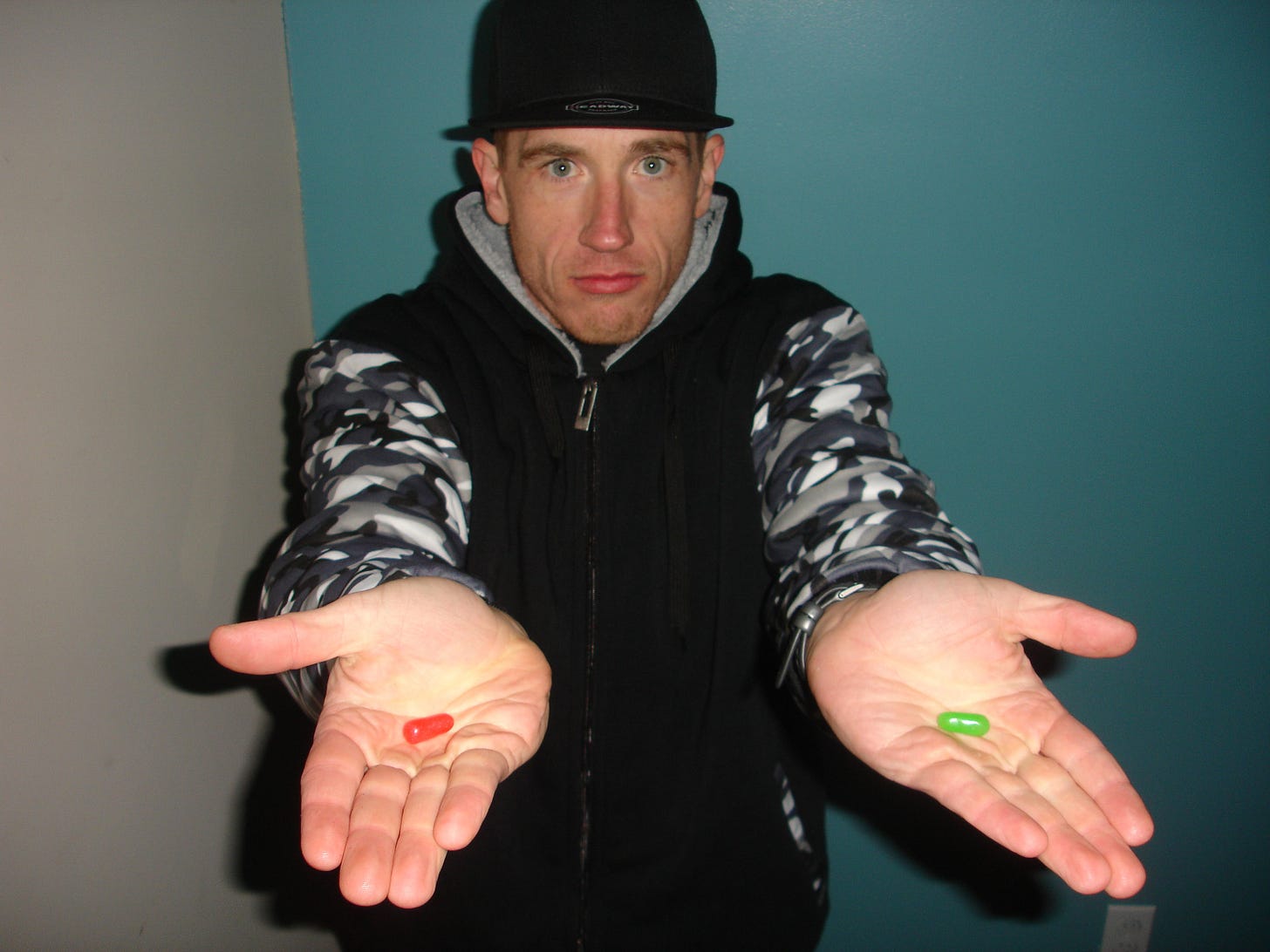Producing 'Rap World' Was More than Babysitting
'Rap World' Producers Harris Mayersohn and Meryl Faye Crock on preventing a movie about procrastination from being derailed by procrastination — and where comedy development stands in 2024.
Hello! Welcome to Nothing Bogus, an Indie Film Listings+ newsletter. The + is commentary, interviews, dispatches, tutorials, and other groovy stuff. I’m going to start with the +. If you subscribed for the listings and only the listings, scroll as fast as you can to the bottom of this email. If you came for the +, no scrolling necessary :)
Towards the end of the pandemic, Conner O’Malley, Jack Bensinger, and Eric Rahill —along with the director Danny Scharar — booked an Airbnb in Pennsylvania for a long weekend, with the goal of making a movie together. O’Malley, Bensinger, and Rahill were rising alt-comedy stars in Brooklyn at the time — and it felt like an exciting moment for them and the scene in general.
The weekend, though, was a bust. “They all left that shoot feeling really terrible,” says Harris Mayersohn, a writer and producer who’d recently worked with the group of comedians on an FX pilot that never aired. “Everyone was like, ‘There's nothing there. That sucked.’"
Or, everyone except for Bensinger. With a bit of time and distance, Bensinger went through the footage and found enough gold to put together a ten minute short. He showed it to O’Malley, and suggested that they should give it another go. That was when they brought in Mayersohn to produce. “I wanted to do it as right as humanly possible without sapping the DIY of it,” Mayersohn says. “So I asked Meryl [Faye Crock]” — with whom Mayersohn was hosting a weekly comedy show, Normal Guys, at the time — “to come help me. I'd never done a project like this, which was such a surprisingly large undertaking.”
By now, you probably know that the project became Rap World, a dizzy 57-minute saga about a trio of townies in 2009 Tobyhanna, Pennsylvania, trying to record a rap album. The film, which was released to O’Malley’s YouTube on Thursday, is both painfully real (as many white former suburbanite dudes will attest on Letterboxd) and painfully funny. O’Malley, Bensinger, and Rahill — as well as a stellar supporting cast of comedians from the scene — expertly embody a group of idiots with a dream. I was curious about what producing a DIY comedy project of this nature ends up looking like, so I called up Mayersohn and Faye — who, in addition to producing Rap World, have worked together on comedy gems like Jo Firestone’s short Singles Retreat, The Hollywood Recorder roundtable, Cole Escola’s TV special Our Home Out West, and O’Malley’s special, Stand Up Solutions.
Producing can mean so many different things. I feel like that's probably especially true of a movie that gets made in this kind of an unorthodox fashion. So, I'm curious what the creators of Rap World saw as your roles, and then what your roles ended up being.
Harris Mayersohn: In many ways, it boiled down to making sure they ate food and didn't die.
So, babysitting?
Meryl Faye Crock: They all felt unwell after the weekend they made the short. And they were like, "To make this project sustainable, we want to have a couple people there organizing the footage, making sure we eat a vegetable, and just creating a more sustainable model for keeping the production afloat."
Mayersohn: I think to speak to all of them, but specifically to Conner — just because of the group he's the person who's had the most "industry experience" — he has always been incredibly gracious about what producing means. In a way, my career is not what it is without Conner's blessing and instilling a confidence in me as a producer. On certain projects, producing is purely doing logistics and bringing in money. That wasn’t the case here.
The team really treated us very much as creative collaborators on this project. So it might be taking pitches for scenes they’d like to do and getting rid of the versions that can't be real first. Then figuring out what we can do and then coming back with what we think the funniest versions of these ideas are. So much of producing on a microbudget thing with such a small team is really taking on a million hats and being production design and wardrobe and transpo and lodging and crafty. Really just everything so they can focus on what they're so good at — which is just being some of the funniest people alive.
Crock: And they were really always down to hear a pitch of how we could do something either more sensibly or funnier. At first, it was intimidating as a new producer, coming into this group of guys who all really knew each other and knew each other's sensibilities and who were so funny and cool to me and have them be like, "Also, what do you think?"
Can you give me some more examples of times when you were able to have creative input?
Crock: I guess what stands out to me is that there's some intimate scenes in the film. And even though it was so brief and for a laugh, we really had intentional conversations around that. I think everyone wanted to make sure that everyone on set felt really comfortable and the scene played as funny as it could and we felt as good as we could. And that the actor coming in playing Conner's wife was in on the joke and we were only doing what she wanted to do. Everyone was so game, but that was an example of us having a voice in the process. But also, we'd all be eating dinner at McDonald's together, and they'd be like, "What's the funniest way to eat a burger?" [Laughs.] You know, it was as big as making everyone feel comfortable and safe and as little as being a test audience for jokes.
Mayersohn: In terms of production design, we really decorated the main house to be a place where there are elements all around that they could have fun with. Part of it was designing it in a way that was conducive to improv.
There are also elements of us all as a team trying to beat out what the turn is in this movie. How do we figure out narrative devices moving where they're getting back to making the album? It was often a group conversation of people throwing out joke pitches, narrative pitches, pitches on where the camera should be. The ending is an idea that is purely Jack's. But how to execute it properly while retaining the initial joke he had through the end of it was incredibly collaborative. And it's us throwing out what the realities are to make this joke as funny as humanly possible and also still work within the means of a production. Sometimes it’s also just pulling the trigger on things because we don't have enough time or resources to keep going back and forth.
Tell me about the significance of the year 2009 for this movie.
Crock: Going back to our contributions, Harris found period-specific posters for the movie theater that we shot the opening scenes in and those are going to go ahead and be Valkyrie, Confessions of a Shopaholic, and Hotel for Dogs. It was an amazing time in culture.
Mayersohn: It was so sick. A lot of the props were from my childhood. I was seventeen in 2009, and a lot of the props and Eric's entire wardrobe were from my closet. Eric is wearing things I wore before 2009.
Crock: But I think it was also specific to the time we were thinking about where America had “solved racism,” Obama had just gotten inaugurated, and white guys could do anything. It was this weird cultural vacuum time that randomly did lend itself to feeling like anything was possible — even for losers, even like the guys that we know.
The impression I've gotten is that a lot of the movie was communally improved almost, and that you filmed a ton of stuff and found the movie in the edit. Is that right?
Mayersohn: Yes and no. Obviously there's a lot of improv. But it was really heavily beated out by Jack, Eric, and Conner. It would keep going back and forth throughout the process as we built filming weekends out.
From that first shoot to the second one that you guys were apart of, how did the process change? Other than you guys keeping everyone on task, were there things everyone took away from that first shoot to make the second more effective?
Mayersohn: I think in many ways it was just having beats and committing to it, as far as I could tell. I guess that's something Meryl and I brought. It's hard to talk about producing in so many ways. At the base level, a good producer in many ways should be in the shadows. It's so different from project to project. But for this group of people, and what I'm really proud of — and specifically for the projects I've loved getting to make with Meryl — I think when we step in, we make the project real for people. That’s what we brought. They couldn’t turn back once we signed on.
As producers, you've both shepherded a lot of really interesting projects from some of the funniest people who are coming up. And at this point, these are people who are mostly in their early thirties. Given these people's talents, they should be big stars, or at least, you know, regulars on sitcoms. But they haven't had those careers for the most part. Obviously some of that may be intentional. But I’m curious about what the studio landscape looks like right now, and why these people haven't broadly been embraced by Hollywood.
Keep reading with a 7-day free trial
Subscribe to Nothing Bogus to keep reading this post and get 7 days of free access to the full post archives.







